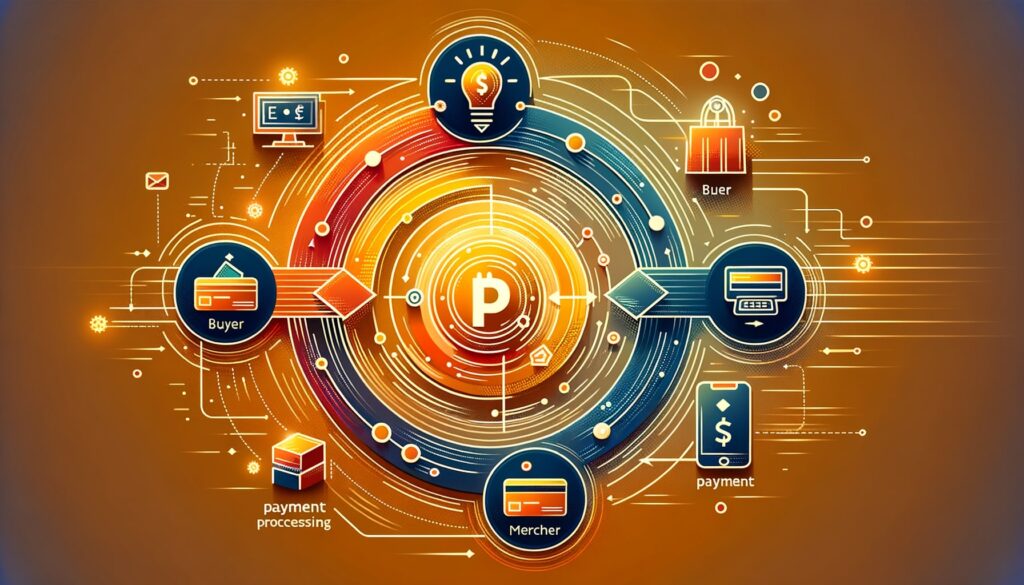
By Harriet Forster October 15, 2024
In today’s fast-paced world of commerce, businesses rely heavily on efficient payment processing systems to handle customer transactions. However, even the most reliable systems can encounter issues that disrupt payment flow, leading to delays, lost sales, or frustrated customers. As a business owner, it’s crucial to be prepared for these challenges, understand the causes, and know how to address them quickly and effectively.
This article will cover common payment processing issues faced by businesses, offer practical solutions for each problem, and provide tips on how to prevent these issues from recurring. By the end, you will have a comprehensive understanding of how to keep your payment systems running smoothly.
Understanding Payment Processing

Before diving into the specific issues, it’s important to understand how payment processing works. Payment processing refers to the steps that take place between when a customer initiates a transaction and when the payment is approved and funds are transferred to the merchant’s account. These steps typically involve:
- Authorization: The customer’s bank approves or declines the transaction based on the available funds and fraud checks.
- Authentication: Verification of the customer’s identity, often through CVV codes, PINs, or other secure methods.
- Clearing: The transaction details are processed by the payment processor and forwarded to the bank.
- Settlement: The bank transfers the funds to the merchant’s account.
Each of these steps involves various stakeholders, including the customer, merchant, payment gateway, acquirer (merchant’s bank), and the issuing bank (customer’s bank), which creates room for potential errors at any stage.
Common Payment Processing Issues
1. Declined Transactions
A declined transaction occurs when the payment processor, issuing bank, or payment gateway rejects a customer’s payment attempt. This is one of the most common payment processing issues businesses encounter.
Causes:
- Insufficient funds in the customer’s account
- Incorrect card information entered
- Expired credit or debit cards
- Payment flagged as suspicious by the bank (fraud prevention measures)
Solution:
- Ask the customer to verify that they’ve entered the correct card information.
- Request the customer to check if their card has expired and use a different card if needed.
- If the bank has flagged the transaction, the customer may need to contact their bank to authorize the purchase.
Prevention: Ensure that your payment gateway provides clear error codes for declined transactions so both you and the customer understand why the payment failed. Additionally, offer multiple payment methods to reduce the chances of lost sales due to a declined card.
2. Failed Payment Gateway Connection
Payment gateways act as the bridge between your website or point-of-sale (POS) system and the banks. A failed connection with the payment gateway can prevent transactions from being processed.
Causes:
- Gateway service outage or maintenance
- Connectivity issues (e.g., slow or unstable internet)
- Incorrect API integration or configuration errors
Solution:
- Check the payment gateway’s status to determine if there are any outages or maintenance windows.
- Test your internet connection and reset your router if necessary.
- Verify the API configuration and contact your gateway provider if you believe there’s an integration issue.
Prevention: To minimize the risk of gateway failure, choose a payment gateway provider with a reliable uptime record and support team. Consider using a backup payment gateway to ensure transactions can still be processed if your main gateway goes down.
3. Chargebacks
A chargeback occurs when a customer disputes a transaction, leading the bank to reverse the payment. This issue can be particularly problematic for businesses, as chargebacks not only result in lost revenue but can also lead to penalties from payment processors.
Causes:
- Customer disputes the validity of the transaction (fraud, unauthorized use)
- Dissatisfaction with the product or service
- Processing errors, such as duplicate charges
Solution:
- Investigate the chargeback to understand the customer’s reasoning and gather any relevant documentation (e.g., receipts, contracts).
- Provide the bank with supporting evidence to dispute the chargeback if it was unfounded.
- In cases of fraud, work with your payment processor to prevent future incidents.
Prevention: Clearly communicate your refund policies to customers and offer excellent customer service to resolve disputes before they escalate to chargebacks. Using advanced fraud detection tools and ensuring transaction transparency can also reduce chargeback occurrences.
4. Slow Transaction Times
Transaction delays can frustrate both customers and businesses, especially in busy retail environments. Slow transactions can occur at any point during the payment process, from authorization to settlement.
Causes:
- Network congestion or slow internet speeds
- Payment gateway performance issues
- Complex security protocols causing processing delays
Solution:
- Ensure your internet connection is fast and stable to prevent lag during the payment process.
- Contact your payment gateway provider if slow transaction times are a recurring issue, as it may indicate server performance problems.
- Streamline your security protocols to balance safety with speed.
Prevention: Work with your payment processor and gateway provider to ensure your system can handle peak transaction volumes without delays. Regularly test your payment process during high-traffic periods to ensure efficiency.
5. Currency Conversion Issues
For businesses that accept international payments, currency conversion errors can create confusion and lead to failed transactions or incorrect amounts being charged.
Causes:
- Incorrect exchange rate settings in the payment system
- Payment gateway does not support the required currency
- Customer’s bank blocking the transaction due to foreign currency
Solution:
- Verify that your payment gateway is properly configured to handle multiple currencies and that exchange rates are up to date.
- If the issue persists, suggest that the customer use a different payment method or process the payment in their local currency.
Prevention: Choose a payment processor and gateway that support multi-currency transactions and dynamic currency conversion. Test the payment system with foreign currencies regularly to ensure it’s functioning correctly.
6. Authorization Holds
An authorization hold occurs when funds are temporarily held in a customer’s account for a pending transaction, but the payment is not settled or completed. This can lead to customer frustration if they feel like they’ve been double-charged.
Causes:
- Transaction is flagged for review or further verification
- Customer cancels the transaction after the authorization has been placed
- Technical issues between the payment processor and the bank
Solution:
- Work with the payment processor to release the authorization hold if the transaction was not completed.
- Communicate with the customer about the hold and reassure them that funds will be released.
Prevention: Monitor authorization holds and ensure prompt settlement or release of funds when the transaction is completed or canceled. Inform customers about potential holds during the payment process.
7. Double Charges
Double charges occur when customers are billed twice for the same transaction, leading to frustration and possible disputes.
Causes:
- System glitch causing the transaction to be processed twice
- Customer mistakenly submits the payment twice due to a slow processing time
- Network issues causing duplicate payment requests
Solution:
- Issue a refund for the duplicate charge and apologize to the customer for the inconvenience.
- Investigate your payment processor’s logs to determine why the double charge occurred and take steps to prevent it from happening again.
Prevention: Ensure that your payment processor has safeguards in place to detect and prevent duplicate transactions. You can also provide clear on-screen messaging to let customers know when their payment has been successfully processed to avoid multiple submissions.
How to Prevent Payment Processing Issues

While it’s important to know how to fix payment processing problems, it’s even more crucial to take preventive measures. Here are some best practices to minimize payment processing issues:
- Choose a Reliable Payment Processor: Select a payment processor with a proven track record of uptime and customer service. Look for a provider that offers support for multiple payment methods and currencies.
- Regularly Update Software and Systems: Keep your POS systems, software, and payment gateway integration up to date to ensure they function properly and include the latest security protocols.
- Monitor Transactions: Regularly monitor your transactions and processing activity for any irregularities. This will help you catch problems early and prevent bigger issues down the line.
- Use Fraud Detection Tools: Implement fraud detection and prevention tools to reduce the risk of chargebacks, unauthorized transactions, and data breaches.
- Test During Peak Times: Test your payment system during peak times or seasonal spikes to ensure it can handle the increased transaction volume without delays or errors.
- Provide Employee Training: Ensure that your employees are trained to handle common payment processing issues, such as declined transactions or double charges, so they can provide fast, effective customer service.
FAQs

Q1: What should I do if my payment gateway is down?
If your payment gateway goes down, first check the provider’s status page for any reported outages. If the outage is confirmed, contact the provider’s support team. Having a backup payment gateway in place can minimize disruptions.
Q2: Can declined transactions be retried?
Yes, in many cases declined transactions can be retried after verifying the customer’s details or addressing the underlying issue, such as insufficient funds or card expiration.
Q3: What is the best way to prevent chargebacks?
Preventing chargebacks involves clearly communicating refund policies, delivering high-quality customer service, and using robust fraud detection tools to prevent unauthorized transactions.
Q4: How do I fix a double charge?
If a customer is double charged, you should immediately issue a refund for the duplicate charge. Investigate the cause and ensure that the issue is resolved within your payment processing system.
Q5: Can I avoid authorization holds?
While you can’t always avoid authorization holds, you can work with your payment processor to ensure that holds are settled promptly or released in a timely manner.
Conclusion
Payment processing issues can cause disruptions in your business, but with the right knowledge and preparation, most problems can be resolved quickly and efficiently. By understanding common payment processing issues such as declined transactions, slow processing times, chargebacks, and failed connections, you can troubleshoot problems when they arise and prevent them from occurring in the future.
Adopting best practices, using reliable payment processors, and implementing fraud prevention measures will ensure a seamless payment experience for your customers and keep your business running smoothly.